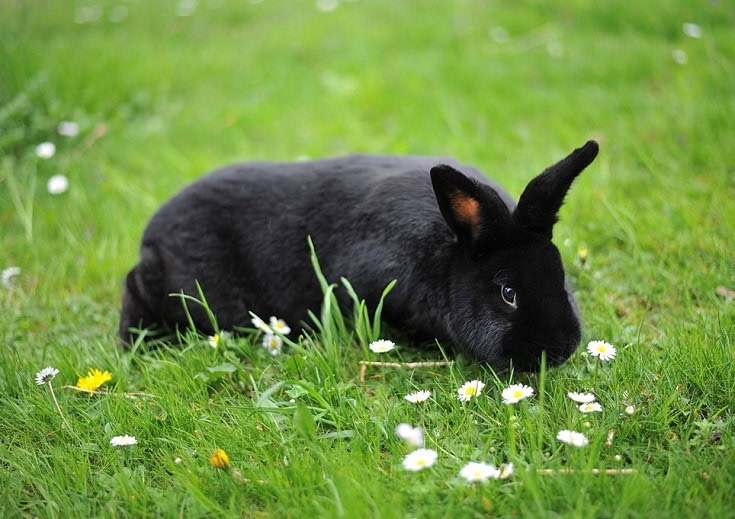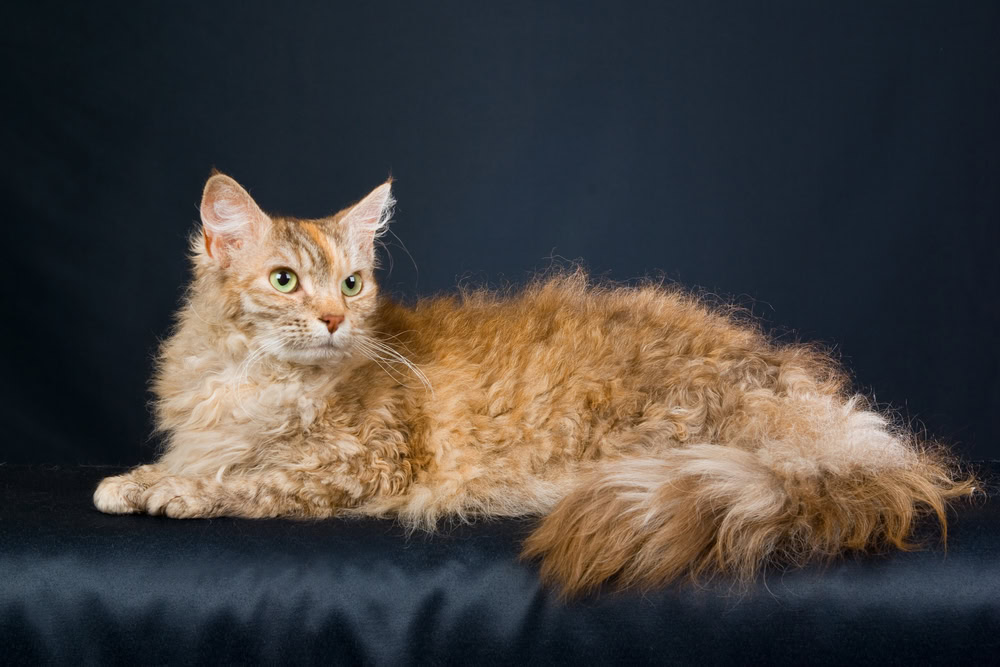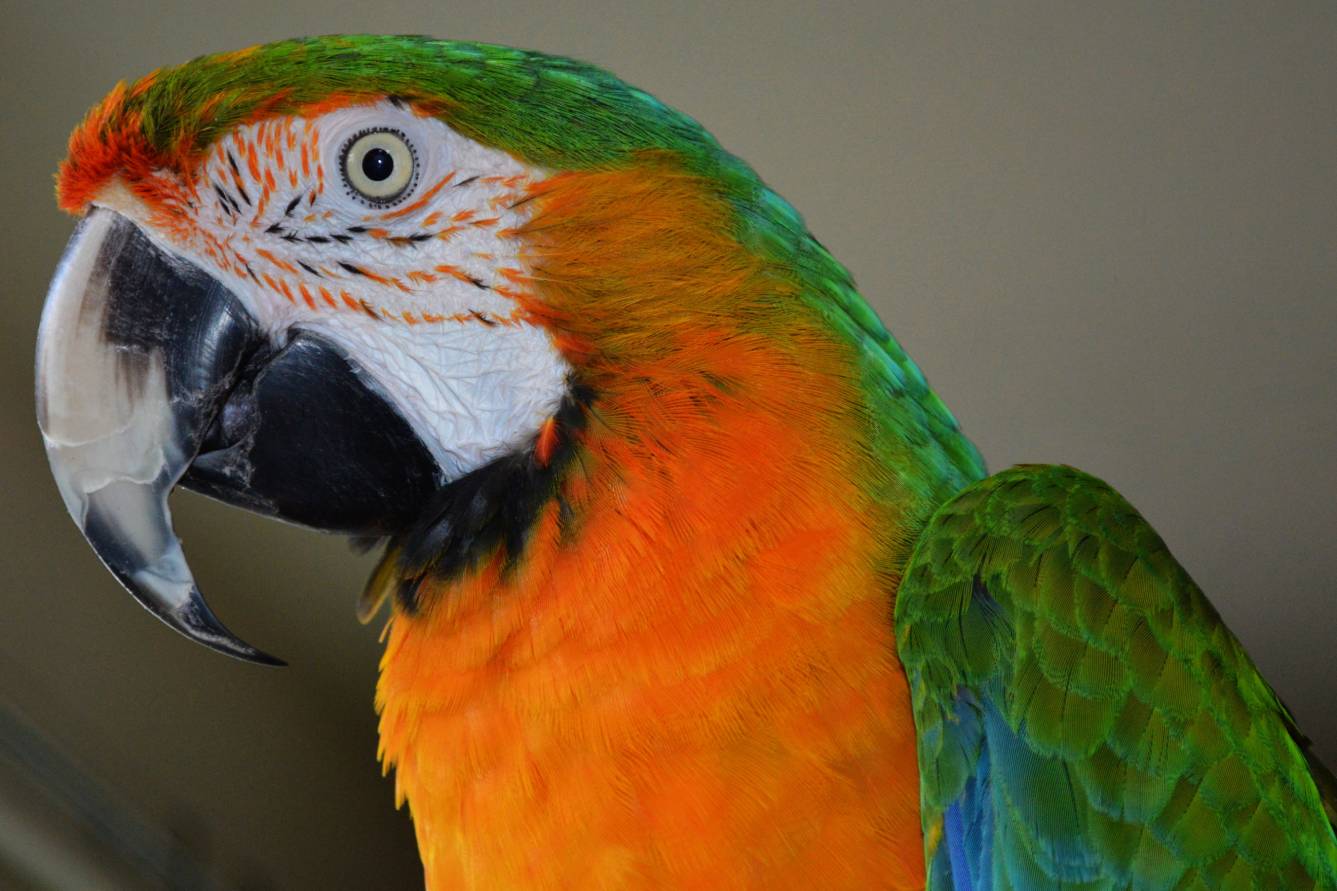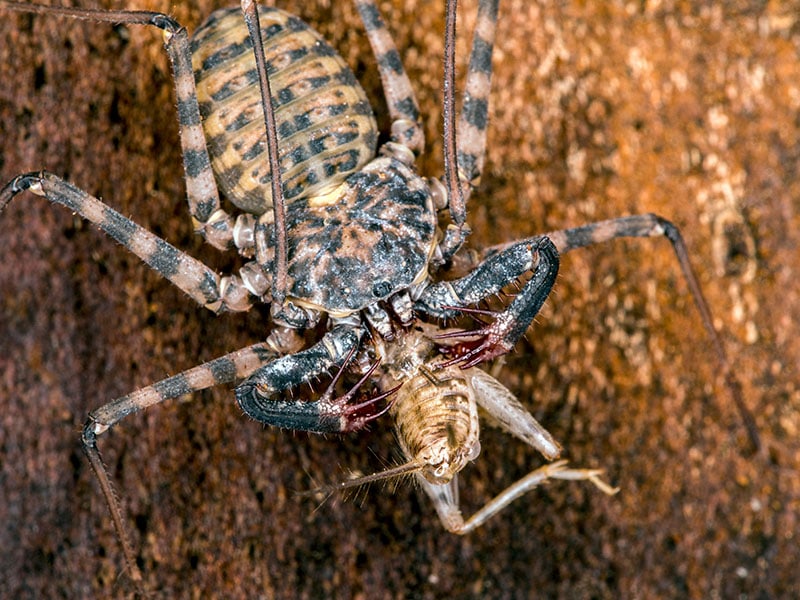Click to Skip Ahead
Many people are surprised to learn that the Alaska Rabbit was first bred in Germany. The goal was to create a rabbit that looked like an all-white Alaskan fox. However, the result was a jet-black rabbit with a uniquely dense coat. The breeders of this magnificent mistake decided to leave the new breed alone, and the Alaska Rabbit was born. Read on to learn more about this remarkable rabbit and perfect pet!
| Size: | Medium |
| Weight: | 7–9 pounds |
| Lifespan: | 7–10 years |
| Similar Breeds: | American Sable, French Angora, Belgian hare, Harlequin, Dutch Havana, Himalayan |
| Suitable for: | All experience levels, families with adolescents and pets |
| Temperament: | Social, amiable, gentle, affectionate |
One of the best traits of the Alaska Rabbit is that it’s docile, making it a great pet for families with adolescents. Alaska Rabbits are gentle, affectionate, and trainable and enjoy spending time with their favorite people. Since Alaska Rabbits can be skittish, gentle handling and care are a must.
Alaska Rabbit Breed Characteristics
How Much Do These Rabbits Cost?
The Alaska Rabbit isn’t rare and, if we’re being honest, isn’t as popular as other breeds. That’s a shame since Alaska Rabbits make genuinely excellent pets. If you’re lucky enough to have a breeder nearby, you can expect to pay between $30 and $70 for an Alaska. You might get lucky and find one at your local shelter, where the cost would likely be less.
You should also remember that you’ll need at least another $100–$200 for all the items you’ll need to care for your new pet rabbit. A hutch, food bowls, litter boxes, bedding, and more are needed to raise a rabbit right. A good suggestion is to purchase these things beforehand so you can set them up in your home before your Alaska arrives.

Temperament & Intelligence of the Alaska Rabbit
From everything in our research, the Alaska rabbit’s temperament is, in a word, calm. They are laid-back, gentle bunnies with a rather high level of intelligence. They can be trained to come to you when called and will gladly snuggle in your lap. As mentioned earlier, Alaska rabbits can be skittish, especially in the first few days and weeks after adoption. As with any new pet, gentle handling and soft voices will go far toward creating an atmosphere where your new bunny buddy will feel safe and comfortable.
Do These Rabbits Make Good Pets? 👪
Although not extremely popular, Alaska rabbits make fine pets and will be a welcome addition to your family. Alaska rabbits are gentle and won’t scratch, nip, or otherwise freak out if handled correctly. They are also one of the more intelligent breeds and are equal to smart dogs and cats. With patience and practice, Alaskans can be trained to do small tricks, easily figure out their litter box, and come to you when you call their names. Alaska rabbits make great pets.
Does This Rabbit Get Along With Other Pets?
Veterinarians and rabbit experts agree that an Alaska rabbit usually gets along well with other pets. It helps if the animal in question and the Alaska rabbit are raised together as babies. That way, aggressive tendencies are lowered, the animals will have a familiar bond, and all pets will feel safe and happy.
Yes, you can adopt an adult Alaska rabbit and, with care and patience, introduce them to your other pets and create a safe environment for both. However, your pets, especially males, should be spayed and/or neutered. This will lower innate tendencies and reduce the risk of your pets not getting along.

Things to Know When Owning an Alaska Rabbit:
Food & Diet Requirements 🥕
Alaska rabbits, like most breeds, need a constant supply of fresh hay. High-quality rabbit pellets are also a must, along with leafy, green vegetables. Around 70% of your rabbit’s diet should be hay.
Habitat & Hutch Requirements 🏠
Alaska rabbits are medium-sized and usually weigh less than 10 pounds. For a rabbit of this size, a 6’x 2’ x 2’ hutch (or slightly larger) is recommended. If you adopt two rabbits, double the hutch size. Also, the Alaska rabbit can be kept indoors or out, and, like most rabbits, it does well in cooler temperatures.
Exercise & Sleeping Needs 🐇
Like all rabbits, you should allow your Alaska rabbit to have between 3 and 5 hours of exercise and activity outside of its hutch every day. The more hours, the better, as rabbits stay active all day but take many naps in between. Like most humans, Alaska rabbits need 8 to 9 hours of sleep a night but sleep for upwards of 14 hours each day when added to their nap time.
Training 🥎
Training an Alaska rabbit is easier than most breeds due to their intelligence and eagerness. As with any new pet, gentle, caring interactions are best; you’ll need to be patient and practice often. Remember, rabbits are as intelligent as dogs and cats and will reward your training diligence by being better pets.
Grooming ✂️
Alaska rabbits have thick fur coats that should be brushed three or four times weekly to prevent matting. It’s also recommended to have them professionally groomed every 3 months to ensure their nails, teeth, and coats are maintained. Alaska rabbits with extra-thick fur might need daily brushing to look beautiful and stay healthy.
Lifespan and Health Conditions 🏥
You’ll be pleased to know that Alaska rabbits tend to be long-lived and have an average lifespan of 7 to 10 years. Like any pet, the better you care for your rabbit, the longer its lifespan will likely be (barring any unforeseen circumstances).
- Hairballs
- Tapeworm
- Roundworm
- Pinworm
- VHD (viral hemorrhagic disease)
- Myxomatosis
- Rotavirus
- Enterotoxemia
- Tyzzer’s disease
- Colibacillosis
- Proliferative enteropathy
Male vs Female
Like most rabbit species, male Alaska rabbits are less territorial, less destructive, and calmer than females. That makes males a slightly better choice as pets, especially for first-time rabbit owners. You should note that males also spray urine to mark their territory while most females don’t, and males will “hump” things if they haven’t been neutered. Having both sexes fixed is recommended to reduce aggressive tendencies.


3 Little-Known Facts About Alaska Rabbits
1. The Alaska rabbit went extinct.
This occurred between the early 1900s and 1972 before breeders reintroduced it.
2. Initial breeders thought the Alaska rabbit would have white fur.
Alaska rabbits were bred because breeders wanted to sell what they thought would be white fur in order for people to use that fur for coats. Luckily, Alaska rabbits have black fur, which is too coarse to make a good coat.
3. The Alaska rabbit was briefly a recognized breed.
The American Rabbit Breeders Association (ARBA) recognized the Alaska rabbit in the mid-1970s. However, they have since rescinded that recognition.
 Final Thoughts
Final Thoughts
With an interesting history that involved attempts to produce all-white fur, the almost jet-black Alaska rabbit was spared from becoming a fur coat. That, however, was great news for anyone who wanted a fantastic family pet. Alaska rabbits are relaxed, affectionate, and truly beautiful bunnies. They live long lives, like to snuggle, are easy to handle, and can be easily trained.
The fact that Alaska rabbits aren’t more popular is a mystery since our research pointed to them making exceptional pets. If you’re in the market to adopt a bunny, we highly recommend seeing if there are any Alaska rabbits near you before you make your final decision.
- https://www.merckvetmanual.com/all-other-pets/rabbits/disorders-and-diseases-of-rabbits
- https://www.goodhousekeeping.com/life/pets/g26950009/best-rabbit-breeds/
- https://www.roysfarm.com/alaska-rabbit/
- https://charitypaws.com/can-rabbits-dogs-and-cats-be-best-friends-yes-learn-how/
- https://anticruelty.org/pet-library/rabbit-exercise
- https://www.columbushumane.org/the-wag/2019/2/20/fun-facts-about-rabbits
Featured Image Credit: StoneMonkeyswk, Shutterstock










2 Responses
I’m curious is alaska rabbits eat any flowers, or are attracted to any specific quality of them.
Dear Fyo,
Rabbits are considered selective eaters. Given the option to pick and choose, they will instinctively opt for nutrient-rich leaves/flowers and new plant shoots over more mature plant material (which is lower in nutrients but higher in fiber). So yes, rabbits would naturally favor flowers as flowers bloom on younger plants.